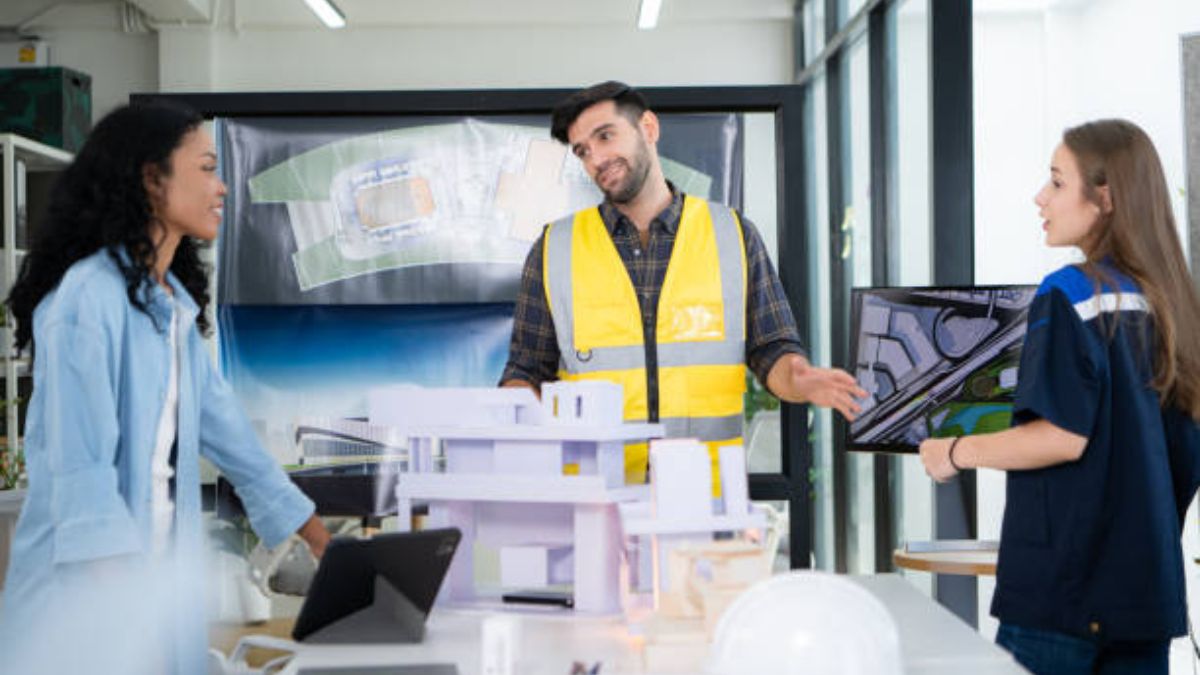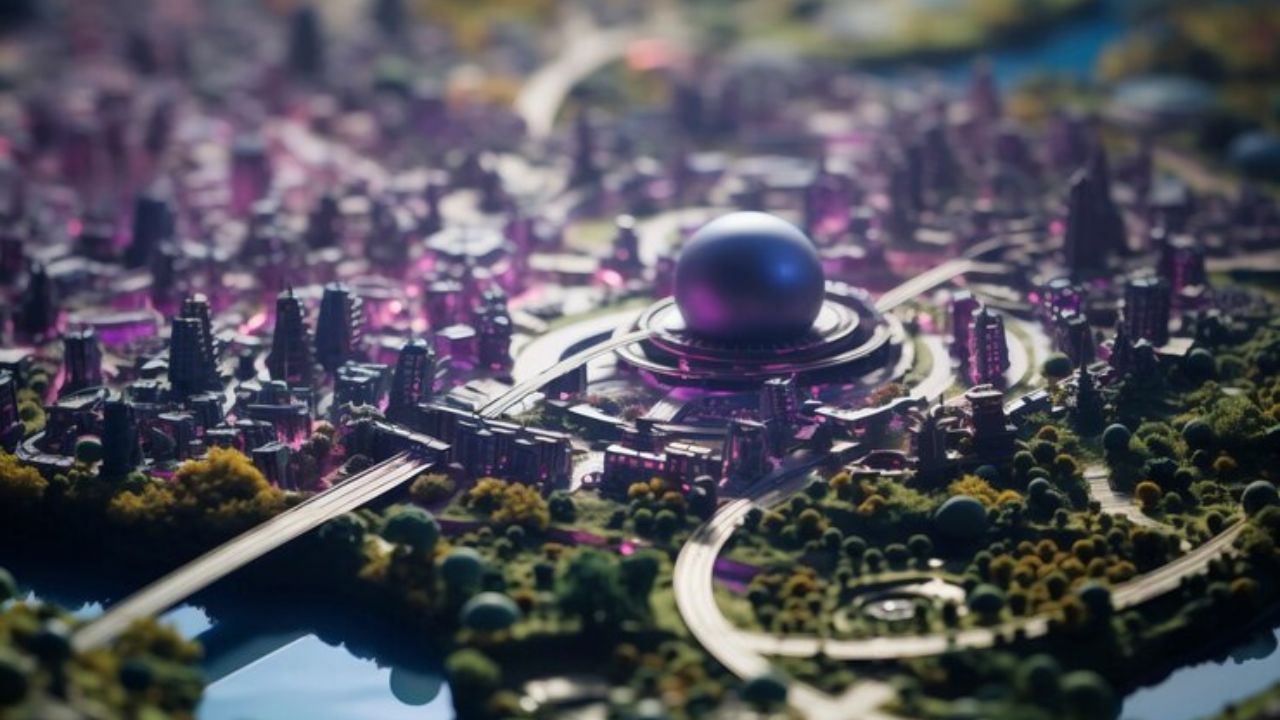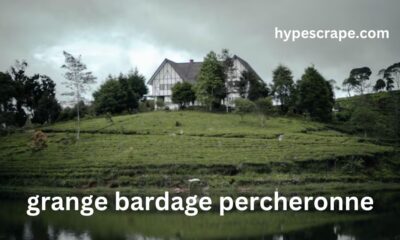INDUSTRY
Adapting to the Future: Innovations in Design-Build Construction

The Basics of Design-Build Construction
Design-build construction, which offers a cohesive strategy that integrates the knowledge of designers and builders from the beginning, is completely changing how projects are conceived and realized. Traditional construction projects often need more support due to fragmented phases, where separate entities handle design and construction. This separation can lead to miscommunication, delays, and increased costs. On the other hand, design-build construction encourages team collaboration and ensures that everyone agrees from the beginning to the end. Design-build is a construction method that streamlines communication, mitigates risk and promotes innovative problem-solving. It fosters a comprehensive framework for efficiency, reducing lead times and improving budget management. This model allows for higher adaptability and responsiveness, making it ideal for complex, large-scale developments requiring precision and coordination.
Technological Advancements Driving Change
The Role of BIM in Construction
Building Information Modeling (BIM) is a crucial tool in the construction industry. It provides a digital representation of a project’s physical and functional characteristics. It aids in informed decision-making throughout the project’s lifecycle, promoting precise planning and issue forecasting by simulating real-world scenarios. This foresight can significantly reduce turnaround times and costs.
Innovations in Project Management Software
With cutting-edge software solutions that provide real-time data access and milestone monitoring, technology is completely changing project management in the construction sector. These tools, often cloud-based, enhance workflow efficiency and resource management and predict bottlenecks, thereby improving the quality and accountability of the construction process.
Embracing Sustainable Practices
Green Building Techniques
The construction industry is shifting towards sustainability due to increasing global environmental awareness. The U.S. Green Building Council promotes green building techniques, which involve using recycled materials and strategies to reduce carbon and waste. The Council aims to create energy-efficient and environmentally responsible buildings.
Energy-Efficient Design
Modern construction increasingly incorporates energy-efficient design, with design-build projects often incorporating renewable energy solutions like solar panels. Energy management systems, high-performance building scarves and intelligent technologies work together to reduce energy consumption making buildings more sustainable and cost-effective in the long run.
Modular and Prefabricated Construction Trends
Benefits of Modular Construction
Modular construction revolutionizes building processes by constructing units off-site under controlled conditions that can be quickly assembled on-site. This method reduces building times, improves quality control, and minimizes disruptions. Lower labor costs and material waste also provide considerable cost savings.
The Impact of Design-Build on Urban Development
Transformative Urban Projects
Design-build construction revolutionizes urban planning and development worldwide, combining innovative design with practical construction methods. This holistic approach reshapes cityscapes with aesthetic and functional edifices, making cities more livable, self-sustainable, and prepared for future growth, thereby enhancing urban sustainability.
Addressing Urban Challenges
Cities face many challenges, including population density, aging infrastructure, and environmental concerns. Design-build methods are uniquely suited to tackle these issues by offering customizable and scalable solutions. The adaptability inherent in design-build allows urban projects to integrate seamlessly with existing infrastructure while efficiently addressing pressing sustainability and space utilization demands.
Looking Ahead: The Future of Design-Build
Predictions and Emerging Trends
As the industry looks to the future, the integration of groundbreaking technologies such as artificial intelligence and robotics promises to further transform construction processes. These advancements will enable even greater accuracy and efficiency while automating repetitive tasks, allowing human resources to focus on creative and complex problem-solving.
The Growing Demand for Skilled Workers
The rise in design-build methodologies necessitates increased skilled labor, with a growing demand for professionals proficient in traditional and digital construction techniques. Educational and training programs are adapting curricula to prepare a workforce that is knowledgeable and ready for the evolving construction landscape.

INDUSTRY
The Ultimate Guide to Commuting from S P Infocity to Cult Magarpatta: Tips and Tricks

Commuting can often feel like a daunting task, especially in bustling areas like S P Infocity to Cult Magarpatta. Whether you’re heading to work or catching up with friends, navigating the busy streets and traffic is part of daily life for many residents. But fear not! This guide will explore everything you need to know about commuting between these two popular locations. From various transportation options to clever shortcuts, we’ve got tips and tricks that will make your journey smoother and more efficient. Let’s dive into the world of commuting from S P Infocity to Cult Magarpatta!
Types of Commuting Options: Pros and Cons
When commuting from S P Infocity to Cult Magarpatta, several options are available. Each has its own set of pros and cons.
Driving your own vehicle offers flexibility. You can leave when you want. However, traffic congestion during peak hours can be a major downside.
Public transportation is another choice. Buses and local trains run frequently, making it an economical option. Yet, delays or overcrowding might affect your schedule.
Ridesharing services like Uber or Ola provide convenience and comfort. You get door-to-door service without the hassle of parking. On the flip side, costs can add up if used daily.
Cycling promotes fitness while reducing carbon footprints but may not suit everyone due to distance or safety concerns on busy roads.
Walking is always an alternative for those nearby, promoting health benefits too! However, it’s only feasible for a select few living close enough to their workplace.
Best Routes for Commuting from S P Infocity to Cult Magarpatta
When commuting from S P Infocity to Cult Magarpatta, choosing the right route can make all the difference.
One popular option is taking the Pune-Solapur Road. It offers direct access and avoids some of the busy local streets during peak hours.
Another efficient route is via Hadapsar. This path often provides a smoother ride since it connects you through less congested areas.
Consider exploring alternate routes that go through Kharadi if you’re looking for variety. This could help you discover new coffee shops or eateries along the way.
Don’t forget about using navigation apps! They provide real-time traffic updates and can suggest quicker paths based on current conditions.
Keep in mind that your chosen route may vary depending on time of day and local events, so stay flexible when planning your commute..
Tips for a Smooth Commuting Experience
To enhance your commuting experience from S P Infocity to Cult Magarpatta, planning is key. Start by checking traffic updates before you leave. Real-time navigation apps can help avoid congested routes.
Consider carpooling if possible. Sharing rides not only reduces costs but also makes the journey more enjoyable with company.
Keep essentials handy: a good book or some music can turn travel time into personal downtime. Snacks and water are great for those longer commutes too.
Always have a backup plan, like alternative routes or modes of transport. Flexibility can save you stress on particularly busy days.
Aim to commute during off-peak hours when feasible. This simple adjustment can significantly cut down your travel time and make the trip smoother overall.
Alternative Ways to Save Time and Money on Commuting
Consider carpooling with colleagues or neighbors. Sharing a ride not only cuts down on fuel costs but also reduces wear and tear on your vehicle. Plus, it can make the daily commute more enjoyable.
Using public transport is another smart option. Buses and shared autos often provide economical solutions for traveling from S P Infocity to Cult Magarpatta while allowing you to relax, read, or even catch up on work during the journey.
Look into flexible working hours if your job allows it. Adjusting your start time can help you avoid peak traffic altogether, making for a quicker trip.
Explore cycling as an alternative mode of transport when weather permits. It’s eco-friendly and serves as great exercise too! Embracing these options may transform how you approach commuting in this bustling area.
Potential Challenges and How to Overcome Them
Commuting from S P Infocity to Cult Magarpatta can present a few challenges. Heavy traffic during peak hours often frustrates commuters, leading to extended travel times.
To tackle this, consider adjusting your schedule. Leaving earlier or later can significantly reduce congestion.
Public transport can sometimes be unreliable. Buses may not adhere strictly to their schedules, leaving you waiting longer than expected. Keep track of real-time updates through apps that provide accurate information on public transport timings.
Another potential hurdle is the lack of direct routes for some commuting options. Research alternative paths and shortcuts; navigation apps are great allies in finding less congested routes.
Safety concerns can arise late at night or in poorly lit areas. Try carpooling with colleagues or friends for added security and shared costs while commuting together makes the journey more enjoyable too.
Conclusion: Making Your Commute Easier and More Efficient
When it comes to commuting from S P Infocity to Cult Magarpatta, there are numerous strategies you can adopt for a smoother journey. Understanding the various transportation options available is key; whether you’re considering public transport, carpooling, or using your own vehicle, each has its unique advantages and drawbacks.
Choosing the best route plays a crucial role in minimizing travel time. By exploring alternative pathways and keeping an eye on real-time traffic updates, you can avoid potential delays. Incorporating tips like leaving earlier or later during peak hours can significantly enhance your experience.
Don’t forget about cost-effective methods as well. Utilizing ride-sharing services or taking advantage of discount packages offered by local transit authorities might help reduce expenses over time.
Addressing challenges before they arise makes all the difference too. Being prepared for unexpected traffic conditions and having backup plans ensures that your commute remains stress-free.
With thoughtful planning and smart choices, commuting between these two popular locations can be transformed into a more enjoyable part of your day rather than just a necessary task. Embrace the journey ahead with confidence!
INDUSTRY
Exploring the Hex Color Code CC876D: Meaning, Applications, and Design Tips

When it comes to digital design, every color tells a story. Whether you’re designing a brand identity, creating a website, or painting a visual masterpiece, understanding the subtleties of your chosen colors can make all the difference. One such captivating shade is the hex color code CC876D, a warm and versatile tone that carries sophistication and creativity.
In this post, we’ll take a deep dive into the specifics of CC876D, what it represents, its applications across industries, and tips for incorporating it into your designs effectively.
What is the Hex Color Code CC876D?
A hex color code is a six-character alphanumeric representation of a specific color in the RGB (Red, Green, Blue) color model used in digital design. The code CC876D represents a rich, warm shade that evokes feelings of rustic elegance and subtle charm. Its makeup can be broken down further as follows:
- Red (CC): 204
- Green (87): 135
- Blue (6D): 109
These RGB values create a muted, earthy tone that resembles a warm terracotta with hints of peach and brown. The warmth of CC876D makes it ideal for designs that need a grounded, authentic, or cozy look.
Similar Colors to CC876D
If you’re looking for shades with a similar vibe, here are a few hex color codes you might consider:
- #C38167: A lighter, peach-toned variant
- #A6634B: A deeper, more reddish-brown cousin
- #EBA084: A brighter, pink-infused tone that feels playful yet elegant.
These related shades can complement or contrast with CC876D to create depth and dimension in your design projects.
What Does CC876D Represent?
Colors have psychological significance in both art and design, influencing how your audience feels and responds. CC 876D, with its warm, earthy qualities, often conveys the following themes:
- Warmth and Comfort: The soft, muted tones evoke a sense of coziness, perfect for projects aiming to create inviting aesthetics.
- Natural Sophistication: Its earthy roots make CC876D feel organic and grounded, lending credibility to designs with a focus on sustainability or natural products.
- Nostalgia and Heritage: The tone has a timeless, rustic appeal, making it perfect for designs with a vintage or handcrafted feel.
These qualities make CC876D a versatile shade that resonates across many industries, from fashion and interior design to branding for artisanal products.
Applications of CC876D Across Industries
1. Branding and Marketing
CC876D is a compelling choice for brands that emphasize authenticity, warmth, and an earthy aesthetic. It works especially well for companies in industries like:
- Wellness & Self-Care: Spa or skincare brands may use CC876D to evoke calm and natural healing properties.
- Food and Beverage: The warm, muted tone can highlight rustic ingredients or emphasize handcrafted products.
- Artisanal Goods: Craft breweries, handmade candle brands, or bespoke furniture makers can tap into the nostalgic elegance of CC876D.
2. Interior Design
The earthy, terracotta-like qualities of CC876D make it an excellent choice for home and commercial spaces. It pairs well with natural materials like wood and stone, enhancing its inherent warmth. Some popular applications include:
- Accent Walls: This shade serves as a focal point, adding depth and coziness without overwhelming the space.
- Furniture & Decor: Use CC876D for textiles, such as throw pillows and rugs, to inject soft, warming tones into a room.
- Kitchens: It can also be used subtly in backsplashes or cabinetry to lend a modern, rustic vibe.
3. Fashion and Apparel
Fashion designers often turn to warm and muted tones like CC876D for seasonal collections. It’s particularly trendy in:
- Fall/Winter Wardrobes: Think sweaters, scarves, and coats in this distinguished hue.
- Accessories: CC876D adds charm in handbags and belts, offering a neutral yet eye-catching look.
- Bridal Wear & Events: Often seen in bohemian or rustic theme weddings.
4. Digital Design
CC876D’s hex format makes it perfect for websites and digital assets:
- UI Elements: Use it for buttons or highlights to draw attention subtly.
- Backgrounds: The muted tone offers a pleasing backdrop without overpowering foreground elements.
- Infographics: Pair CC876D with complementary shades to create visually appealing and easy-to-read graphics.
Pairing CC876D with Other Colors
To maximize the appeal of CC 876D in your designs, you’ll want to deliberately pair it with both complementary and analogous colors. Here’s how you can create striking palettes:
- Neutral Combinations: Pair CC876D with whites (#FFFFFF), creams (#F6F5E4), or light grays (#D8D8D8) to achieve a minimalist, sophisticated look.
- Bold Contrasts: Bright blues (#4488FF) or deep greens (#357C45) bring energy to earthy undertones, creating vibrant contrasts.
- Analogous Harmony: Combine CC 876D with shades of red (#6D3427) and orange (#F37C50) for a monochromatic, cohesive design.
Example Color Palette Featuring CC876D:
- Primary Color: #CC876D (Warm Earth)
- Secondary Color: #F6F5E4 (Creamy Neutral)
- Accent Color: #357C45 (Deep Forest Green)
- Highlight Color: #F37C50 (Bright Pumpkin)
This palette works beautifully for projects focused on natural themes or cozy aesthetics.
Tips for Using CC876D in Design
- Keep Balance: While CC876D is versatile, it’s most effective as an accent color. Overusing it might make your design feel overly heavy.
- Leverage Lighting: When used physically, such as in interior design or apparel, ensure the lighting highlights the tone’s warmth.
- Pair with Textures: Enhance the color’s rustic feel by combining it with textures like woodgrain, terracotta tiles, or even woven textiles.
- Contrast Wisely: To keep designs clean and modern, balance CC 876D with tonal contrasts that prevent it from looking too “muddy.”
Where to Find Inspiration for CC876D
If you’re looking for creative ideas on how to integrate CC876D, explore platforms like Pinterest or Behance under topics like:
- Bohemian design aesthetics
- Vintage furniture collections
- Rustic website design inspirations
You can also use photo-editing tools like Adobe Color to explore how CC876D translates across different visual contexts.
Bring Warmth to Your Designs with CC876D
CC876D is more than just a hexadecimal value—it’s a richly warm, versatile color with the power to transform designs across branding, interiors, fashion, and digital projects. Its natural charm and earthy sophistication make it perfect for creating timeless, inviting aesthetics.
Now that you’re familiar with CC876D and its endless possibilities, it’s time to bring it into your next project. Don’t forget to experiment with complementary tones and textures to unlock this color’s full potential.
Conclusion
CC876D offers an exceptional opportunity for designers and creators seeking to incorporate warmth and authenticity into their projects. Its versatility across various industries—from branding and interior design to digital and fashion—makes it an attractive option for anyone wanting to evoke a sense of comfort and natural elegance. By carefully balancing its use with contrasting or complementary colors and textures, CC 876D can elevate any design with its soothing, earthy appeal. Let this unique shade of terracotta inspire you to craft timeless, inviting spaces and products that resonate with audiences on a deeper level. Embrace CC876D to infuse your projects with a touch of nature’s warmth and sophistication.
ANIMALS
How to Choose the Right Consumer Research Firm for Your Business Needs

Understanding the Importance of Consumer Research
Understanding consumer preferences is crucial for business success in today’s competitive markets. Engaging a consumer research firm can provide essential insights into customer behavior, guiding strategic decisions and fostering growth. Partnering with a firm like The Benchmarking Company offers businesses access to detailed analytics tailored to industry-specific needs. These insights are invaluable in aligning products and services with customer expectations.
Consumer research not only helps companies understand market trends but also assists in identifying potential threats and opportunities. Companies that incorporate research findings into their strategies often find themselves ahead of the curve, able to anticipate changes and react swiftly to consumer demands.
Types of Consumer Research Services
Before choosing a research firm, it’s essential to understand their various services. Broadly, services can be classified into quantitative, qualitative, and mixed-method research. Quantitative research involves numerical data analysis, often used to identify patterns and make predictions. Qualitative research, on the other hand, provides deeper insights by exploring consumer attitudes and motivations through interviews and focus groups.
Mixed-method approaches combine these to provide a comprehensive view of consumer behaviors. Selecting the right type of service depends on your business objectives and the specific information you need to gather about your market.
Criteria for Selecting a Research Firm
Selecting the right consumer research firm involves considering several factors. First, assess whether the firm has expertise in your industry. This knowledge will enable them to design relevant research frameworks and accurately interpret results. Additionally, consider the firm’s flexibility in accommodating your specific research needs.
Another vital criterion is the firm’s methodology. Ensure they employ robust and ethical research methods. This diligence ensures the data collected is reliable and valid, forming a solid foundation for decision-making.
Evaluating Expertise and Track Record
A firm’s track record is a testament to its reliability and effectiveness. Look for case studies and testimonials that highlight past projects and successes. Proven success in similar projects can offer reassurance that the firm will meet your expectations. A well-regarded firm will have a portfolio of clients and a history of delivering actionable insights.
Delve into industry reviews and articles from credible sources to further validate the firm’s expertise. This stage is essential to making sure you work with a company that can guide your business toward wise strategic choices.
The Role of Technology in Modern Research
Technology has revolutionized consumer research by enabling data to be collected and analyzed on an unprecedented scale. Using AI, big data analytics, and automation tools has enhanced the accuracy and efficiency of research processes. Firms employing cutting-edge technology can offer faster turnaround times and more comprehensive insights.
Evaluating a firm’s technological capabilities is essential. Firms that leverage advanced tools provide innovative solutions such as real-time data analysis and predictive modeling, which can significantly enhance the strategic value of their insights.
Ethical Considerations in Research
Ethical practices in consumer research are non-negotiable. As data privacy concerns grow, any research firm you work with must adhere strictly to ethical guidelines and data protection regulations. This commitment ensures compliance and protects consumer trust and brand reputation.
Verify that the firm follows established ethical frameworks, such as obtaining informed consent from participants and ensuring data is collected and stored securely. This diligence can safeguard against legal repercussions and enhance public perception of your company.
Balancing Cost and Quality
While budgetary considerations are important, balancing cost with the quality of insights is critical. Cheaper services lack in-depth analysis or employ outdated methodologies, which could undermine the reliability of the data. Investing in a quality research firm can yield a high return on investment by providing actionable, data-driven insights.
Look for firms that offer flexible pricing models and transparent billing practices. These can help manage costs without compromising the quality of service. A clear understanding of what you’re paying for will ensure you receive value for money.
-

 BLOG1 year ago
BLOG1 year agoEscape to Tranquility Experience Grange Bardage Percheronne in Normandy
-

 LIFESTYLE1 year ago
LIFESTYLE1 year agoAir Jordan 1 Retro High Off-White University Blue
-

 SOCIAL MEDIA1 year ago
SOCIAL MEDIA1 year agoDecoding the Drive Social Media Pyramid Scheme Mystery
-

 LIFESTYLE1 year ago
LIFESTYLE1 year agoAir Jordan 4 Retro Metallic Purple
-

 BLOG7 months ago
BLOG7 months agoDecoding 540-315-8592: From Numbers to Messages
-

 HOW-TO GUIDES1 year ago
HOW-TO GUIDES1 year agoShop Smart and Save with Goldengatemax.shop Online Guide
-

 BUSINESS1 year ago
BUSINESS1 year agoDemystifying 315-442-5267 Common Myths and Facts Revealed
-

 LIFESTYLE1 year ago
LIFESTYLE1 year agoAir Force 1 Shadow Pistachio Frost